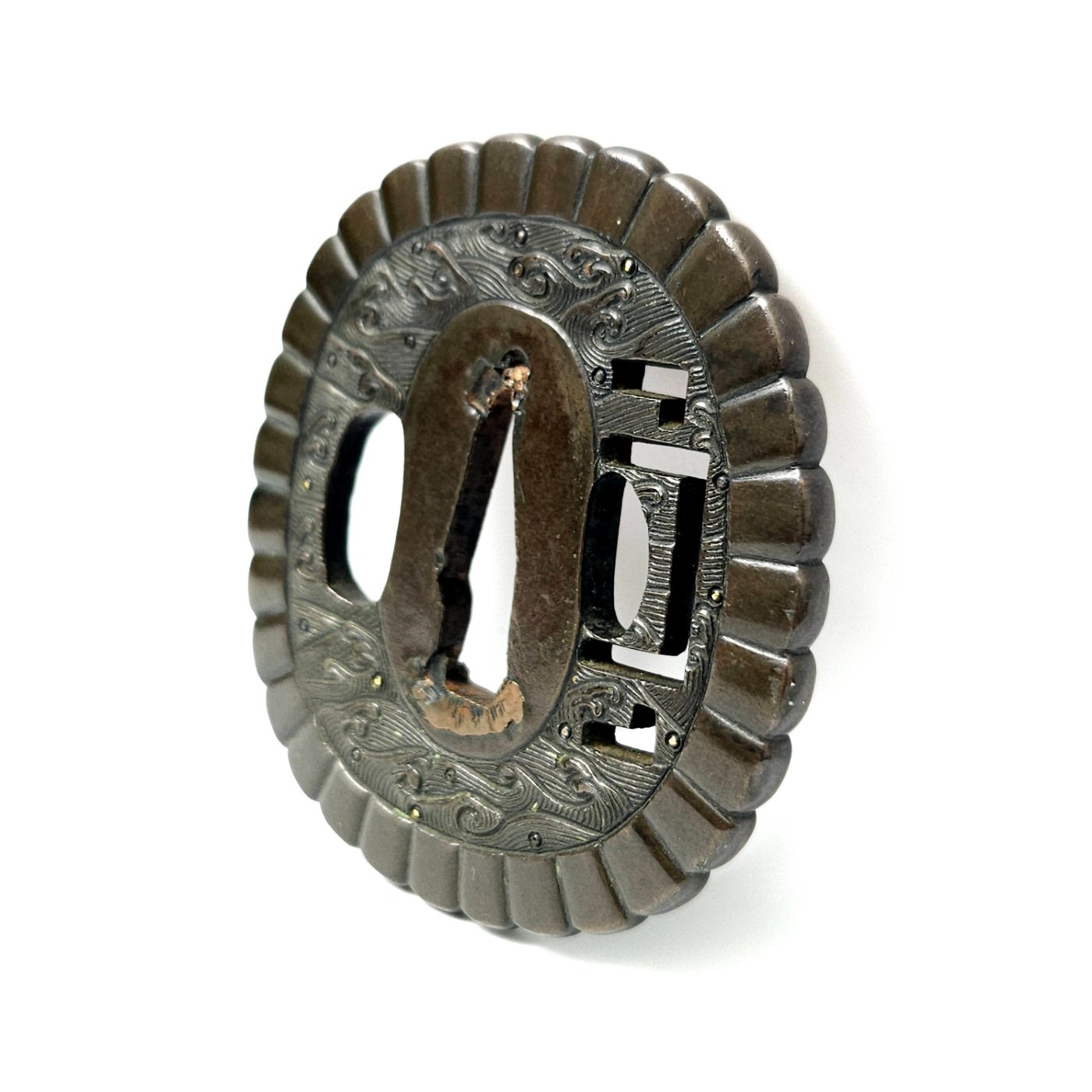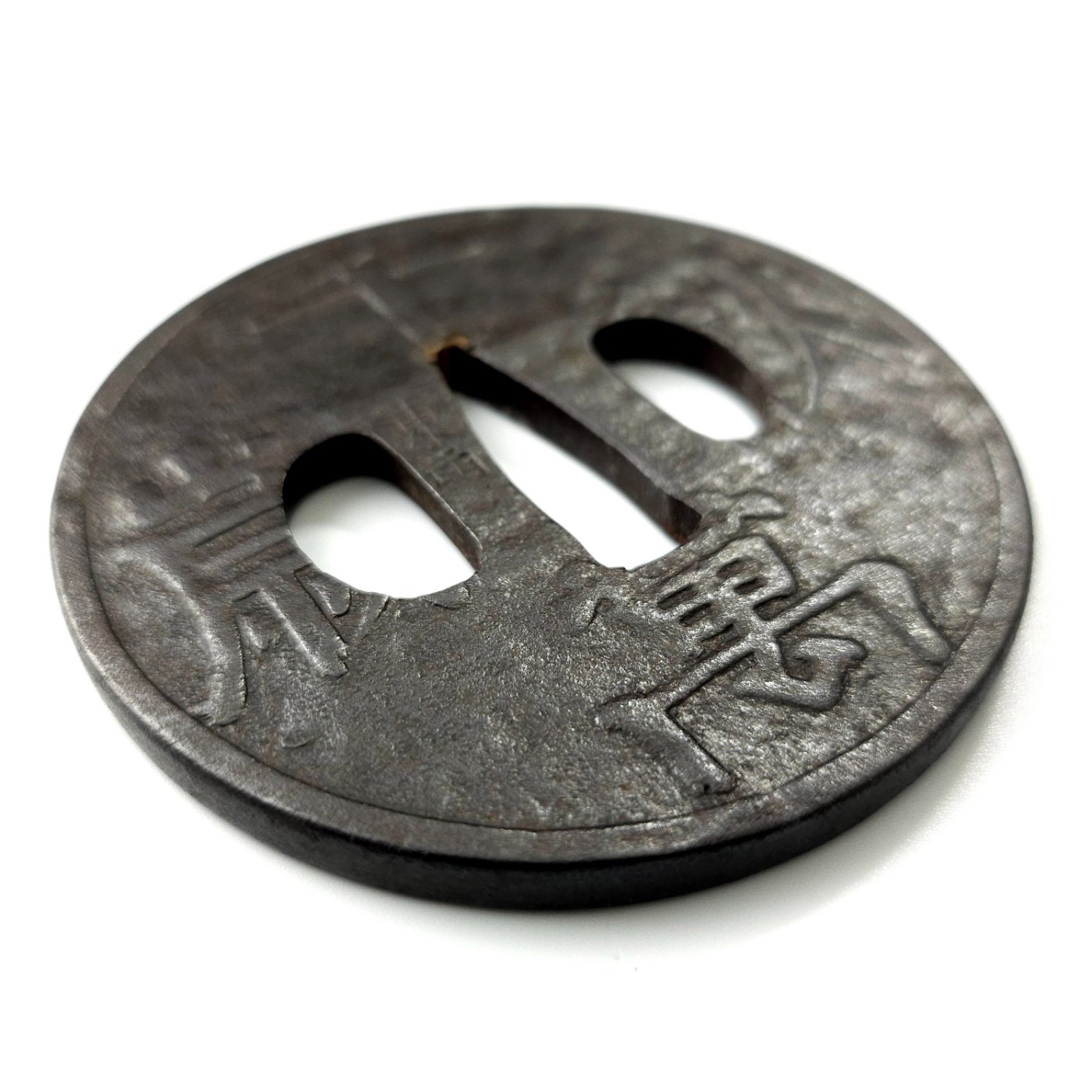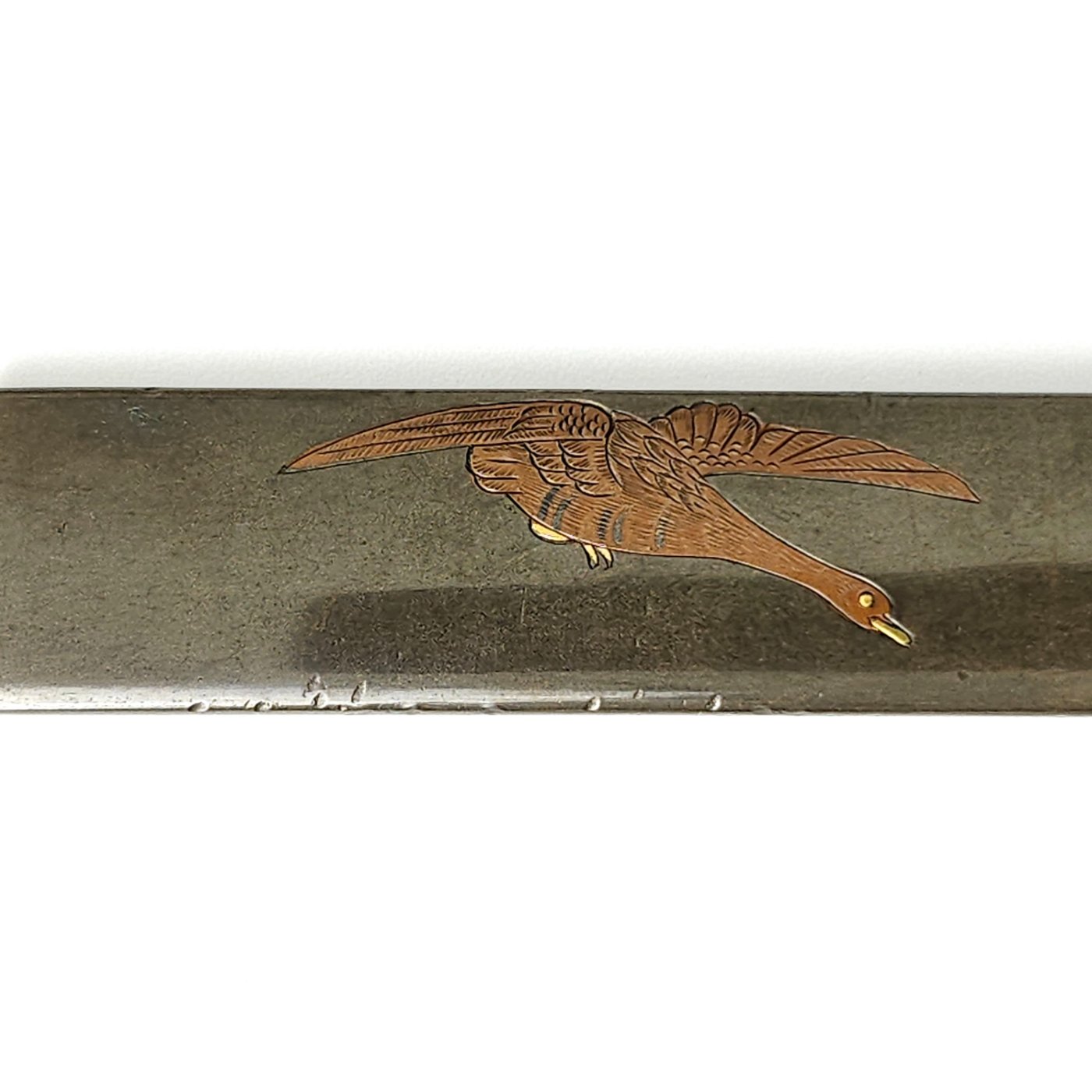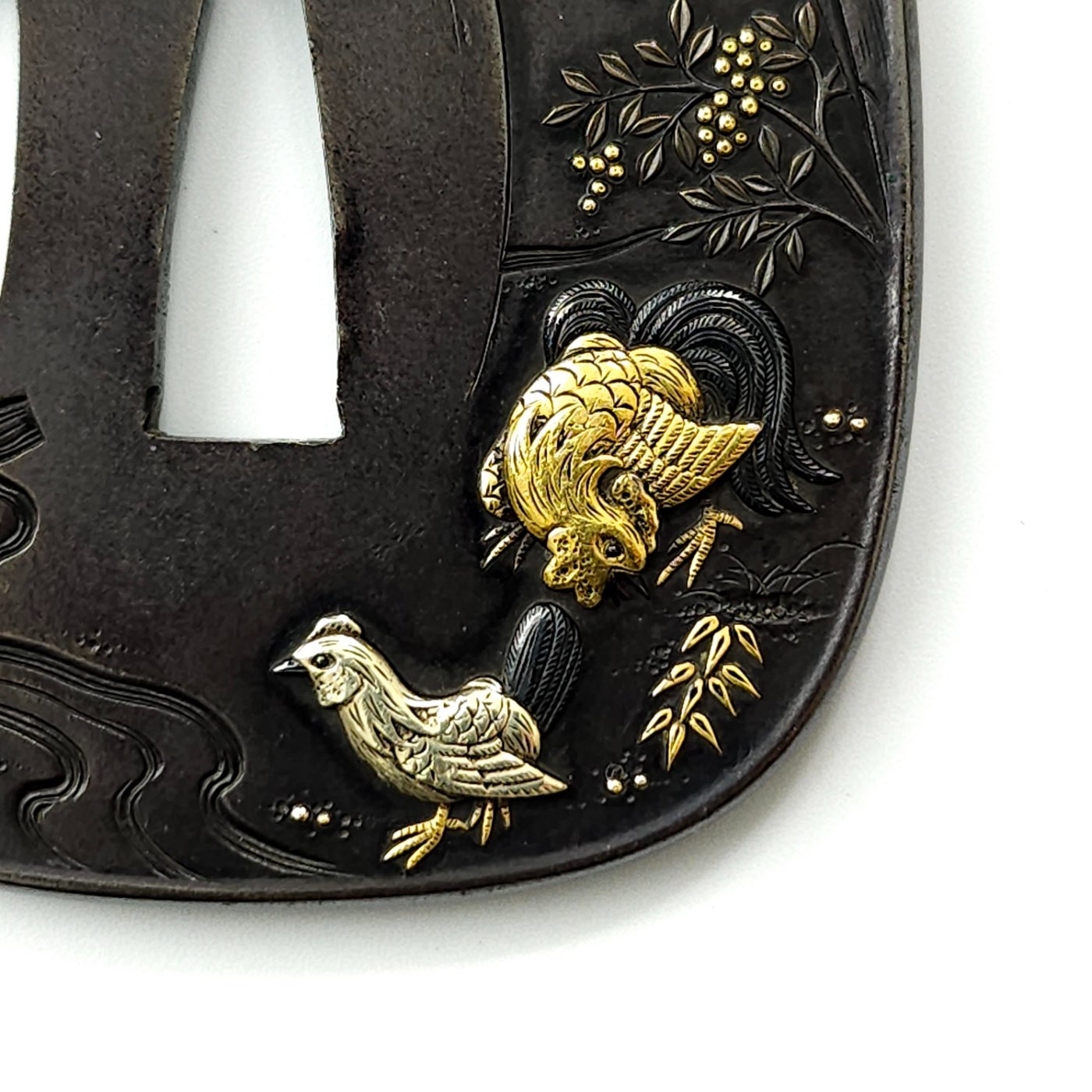This Tsuba is absolutely beautiful and with wonderful patina. Tsuba appears stronger and even more stylish than its possible to capture on picture.
Signed 東都小西湖畔之住 道寿拙作
Michitoshi of the shores of Shoseiko in the Eastern Capital, humbly made this
Details:
Shoseiko is a poetic name for Shinobazu pond in the Ueno section of Tōkyō, used in the latter part of the Edo period. Apparently, the early residents of the area (particularly the artists) disliked the name “Shinobazu”, and often used other names to refer to the lake. The name “Shoseiko” alludes to a famous lake in China to which Shinobazu was compared. It has been transliterated as “Konishiko”, but it appears the pronunciation should be Shoseiko.
The signature is in sōsho (grass script) style calligraphy. The two characters 拙作 indicate humility or deprecation on the part of the artist (i.e “humbly made” or “made this humble work”). There are no semagane or tagane marks, and the pristine condition of the seppadai, as well as the signature, theme, and material used, indicate to me this is a late Edo piece.
Unfortunately, the two artists listed in Wakayama who used the name Michitoshi don’t seem to match the realities of this particular Tsuba. The workmanship has similarities to Yatabe Michitoshi, but the soft metal base with high-relief colored metals seems to be a style that is of a later time than Yatabe Michitoshi. Also, the location on the shores of Shinobazu/Shoseiko in Ueno is not, as far as I know, a location that is associated with Yatabe Michitoshi.
Conclusion:
I don’t think this Tsuba is from either of the Michitoshi smiths listed in Wakayama. The signatures don’t match with the signature on this Tsuba, the location mentioned in the signature on work for either of the Michitoshi smiths listed in Wakayama, and the tsuba itself seems to come from several decades after either Michitoshi was alive.
Therefore, I think this Tsuba is possibly the work of an unknown, late-Edo Michitoshi smith of the Mito School (Unno line), or perhaps an early work of Unno Moritoshi himself. The use of the unique phrase, “on the shores of Shoseiko in the Eastern Capital”, the use of colored metals on a soft metal base, the similarity of the composition, the use of “toshi” (寿/壽) in the name, and the use of the deprecating terms in the signature indicate to me a strong link with Unno Moritoshi. MFA Boston Museum lists a Tsuba by Unno Moritoshi (ACCESSION NUMBER 11.5385) with the same phrase “on the shores of Shoseiko in the Eastern Capital”.
Furthermore to strengthen this theory, there are a couple samples at MFA made by Unno Moritoshi, that shows it was common for him to make hitsu-ana in irregular shape with curvatures. One of the tsuba also share much similarities in shape and the way mimi is done. Another tsuba, seen at Walthers Museum, is very similar in color and base metal, the way the dog is constructed in high-relief, the way its carved and the fur is shaped. Even the pampas grass is done in very same style and also its important to notice that the way the “ground” in bottom of tsuba is carved is very identical and appears to be done by the same maker. All this, to me, strongly points towards this tsuba is work by Unno Moritoshi.


See the full images on MFA here:
https://collections.mfa.org/search/Objects/peopleSearch%3AUnno%20Moritoshi


See the full images on Walthers Museum here:
https://art.thewalters.org/detail/14749/tsuba-referring-to-the-noh-play-kayoi-komachi/
Unfortunately, this kind of original research would be very difficult to prove without other examples, or some other kind of evidence. Currently all we can say is that it has the signature of Michitoshi, and that it appears to be the work of an artist from the Mito School, and leave it at that. The Unno line is influenced by the Tamagawa line, which was influenced by Yatabe Michitoshi, so you could say that the piece is suggestive of the Yatabe line. But anything more than that might be claiming too much. The piece doesn’t look like it’s from the mid 1700s, and the phrase and writing on the back don’t look like they are from that era either, and as far as I know Yatabe Michitoshi never produced any finished works in Edo, so it’s a conundrum.
Further notes:
Both 道 and 通 can be pronounced “michi” 一柳 In the case of this school, it seems to be pronounced “Hitotsuyanagi”, although some internet sources say “Ichiryū”. Both pronunciations come from valid readings of these two kanji.
小西湖 = Shoseiko. Some references transliterate as “Konishi-ko”, however the reading of Shoseiko seems to be correct and specific to this lake/pond in the Ueno district of Tōkyō.
寿/壽 toshi, although some online references use “naga”. Therefore, one can find Michitoshi sometimes being listed as “Michinaga” due to the dual possible readings. Michitoshi seems to be the correct reading in this case.
This Tsuba I have decided will be sent off to be evaluated by Shinsa.
Mei/signature:
東都小西湖畔之住 道寿拙作
Michitoshi of the shores of Shoseiko in the Eastern Capital, humbly made this
School/province:
Mito / Unno school
Period/age:
1834-1896
Measures:
8.30 cm x 7.60 cm x 0.40 cm (at nakago-ana)
Certificate:
No
Included:
Kiri box included



















































